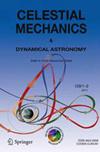Knowledge acquisition and representation techniques in scholarly communication
IF 1.4
3区 物理与天体物理
Q3 ASTRONOMY & ASTROPHYSICS
引用次数: 12
Abstract
Paper journals, conferences and workshops have been the major media for scholarly discourse for 300 years. However, in the 1990s access to low-cost personal computing and Internet communications is leading to radical changes in the operation of scholarly communities. Electronic publication and conferencing is becoming common in all disciplines using commonly available Internet facilities such as ftp archives, list servers, gopher and world-wide web. Some scholarly communities that had not previously achieved a critical mass have done so through the net, others have launched major collaborative projects managed through the net, and others are questioning the value of conventional conferences that are limited by being localized in space and time compared with the flexibility of continuous international electronic conferencing through the web. However, the majority of current electronic scholarly discourse emulates paper-based media in relying primarily on text and diagrams for knowledge communication. It is beginning to take advantage of some of the multimedia capabilities of electronic publishing for color diagrams, pictures, movies and sound. Hypertext and hypermedia capabilities are being used to develop webs of linked material. Concept maps and formal knowledge structures are being used to provide a framework for knowledge expression, interchange and collaborative development. This article focuses on the extension of current documentation technologies to provide knowledge-level support for scholarly communities.学术交流中的知识获取与表达技术
300年来,纸质期刊、会议和研讨会一直是学术讨论的主要媒介。然而,在20世纪90年代,低成本的个人计算和互联网通信的使用导致了学术团体运作的根本变化。电子出版物和会议在所有学科中都变得越来越普遍,这些电子出版物和会议使用了常见的Internet设施,如ftp档案、列表服务器、gopher和世界范围内的web。一些以前没有达到临界质量的学术团体已经通过网络做到了这一点,其他的已经启动了通过网络管理的主要合作项目,还有一些人正在质疑传统会议的价值,与通过网络进行的连续国际电子会议的灵活性相比,传统会议在空间和时间上受到局限性的限制。然而,目前大多数电子学术话语模仿纸质媒体,主要依靠文本和图表进行知识交流。它开始利用电子出版的彩色图表、图片、电影和声音的一些多媒体功能。超文本和超媒体功能正被用于开发链接材料的网络。概念图和正式的知识结构被用来提供知识表达、交换和协作开发的框架。本文主要关注当前文档技术的扩展,以便为学术团体提供知识级支持。
本文章由计算机程序翻译,如有差异,请以英文原文为准。
求助全文
约1分钟内获得全文
求助全文
来源期刊

Celestial Mechanics & Dynamical Astronomy
地学天文-数学跨学科应用
CiteScore
3.00
自引率
12.50%
发文量
49
审稿时长
6 months
期刊介绍:
The international journal Celestial Mechanics and Dynamical Astronomy is concerned with the broad topic of celestial mechanics and its applications, as well as with peripheral fields. The papers published in Celestial Mechanics and Dynamical Astronomy include treatments of the mathematical, physical and computational aspects of planetary theory, lunar theory, general and special perturbation theory, ephemerides, resonance theory, geodesy of the Earth and the planets, dynamics, the 3-body problem, the n-body problem, space mechanics, ring systems, galactic dynamics, reference frames, time, relativity, nongravitational forces, computer methods, computer languages for analytical developments, and database management. Celestial Mechanics and Dynamical Astronomy is the journal of record in its field and is an indispensable component of reference libraries on Dynamical Astronomy, Astrodynamics and Dynamical Systems.
 求助内容:
求助内容: 应助结果提醒方式:
应助结果提醒方式:


